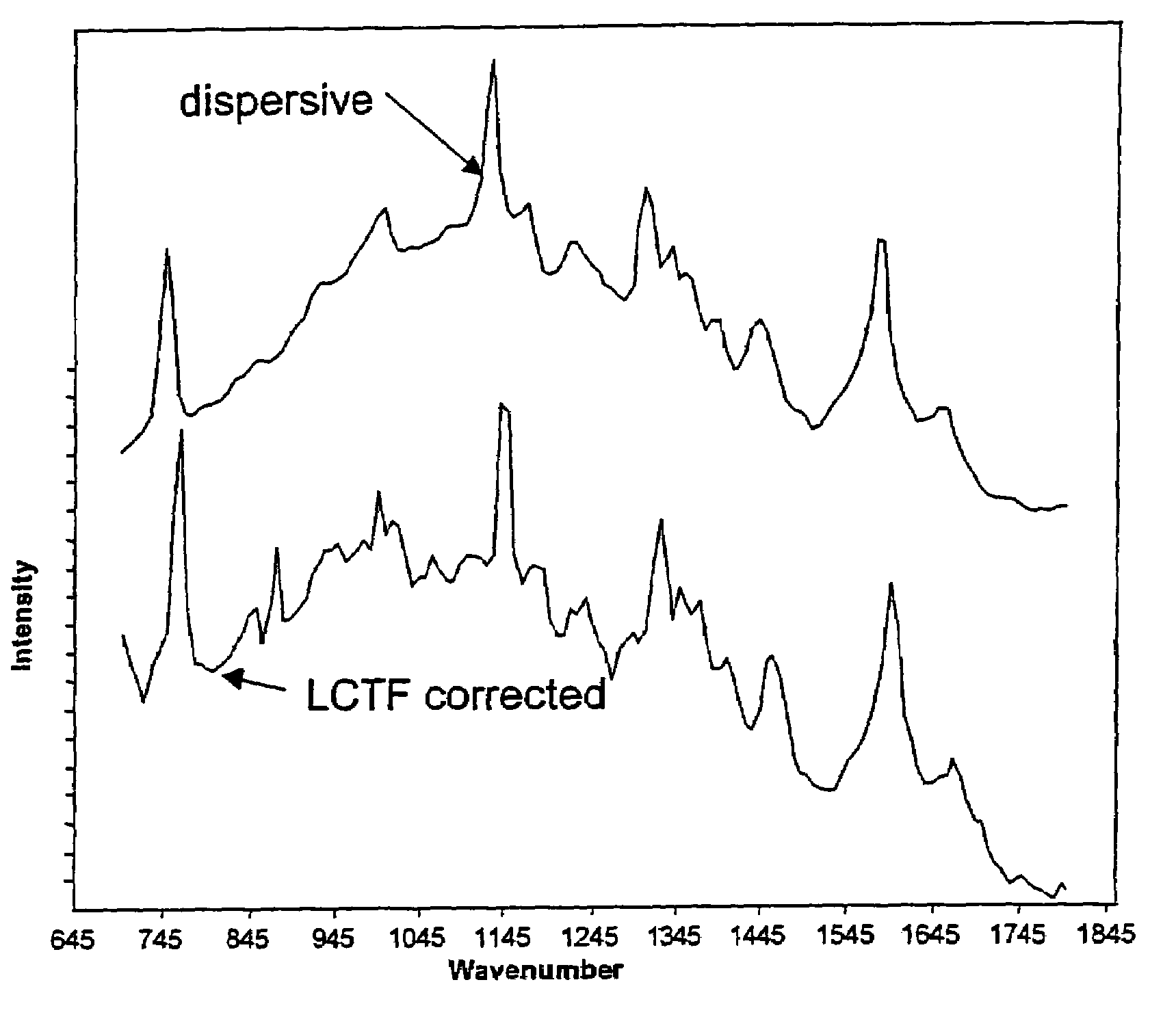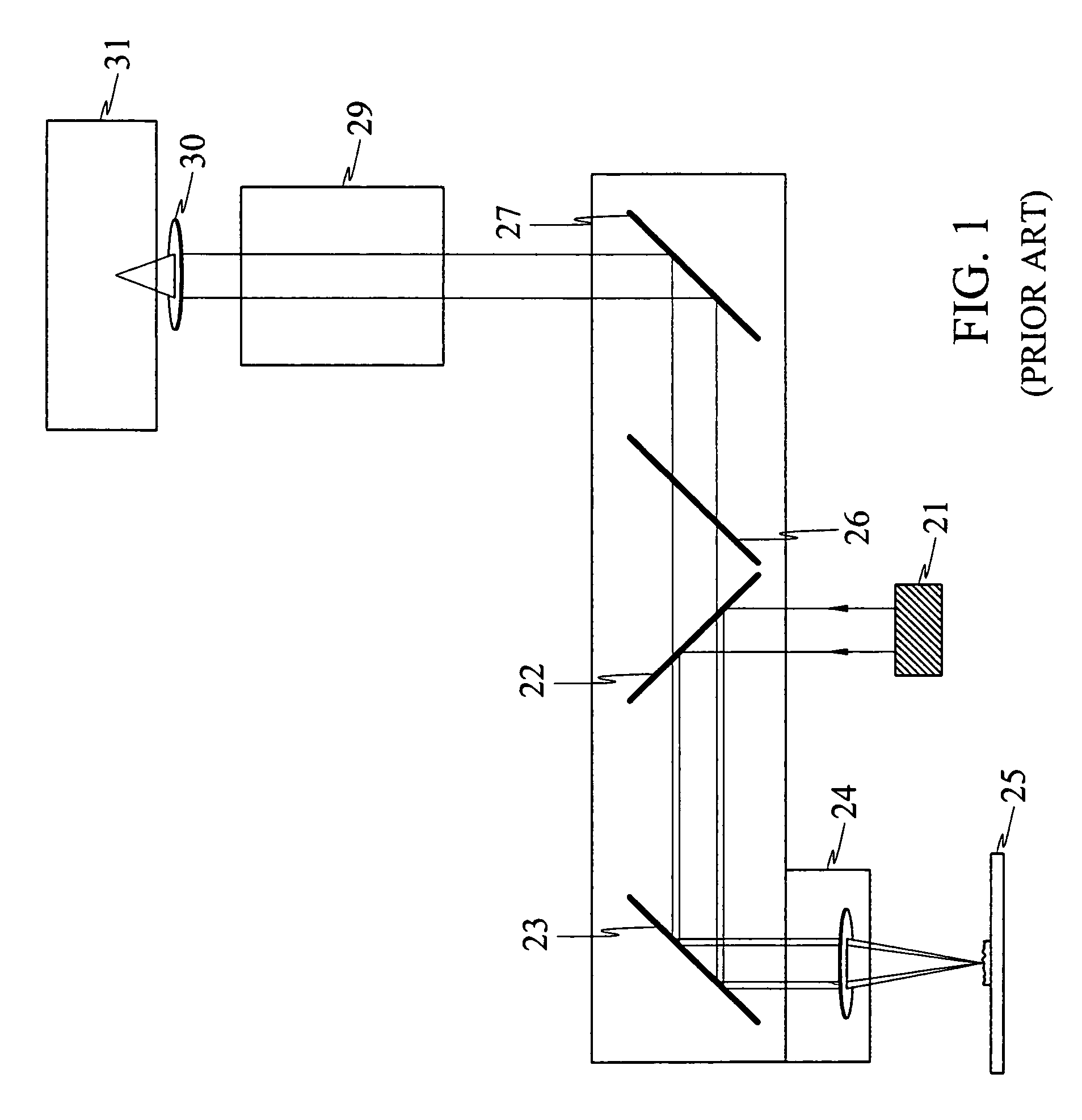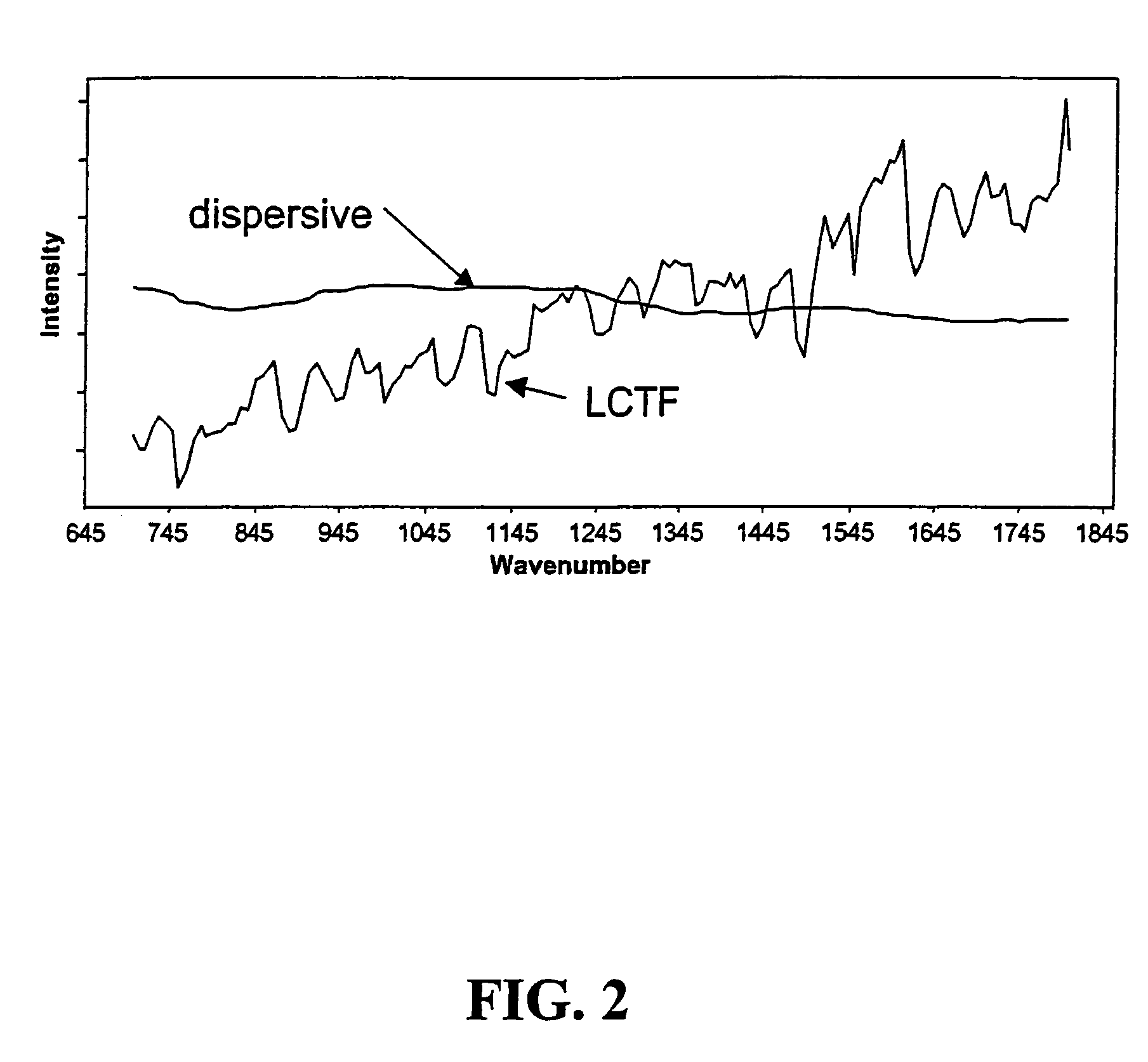Method and apparatus for spectral modulation compensation
a compensation method and spectral modulation technology, applied in the direction of optical radiation measurement, instruments, spectrometry/spectrophotometry/monochromators, etc., can solve the problems of reducing practicability, masking the real signal, and uniform background signal
- Summary
- Abstract
- Description
- Claims
- Application Information
AI Technical Summary
Benefits of technology
Problems solved by technology
Method used
Image
Examples
Embodiment Construction
[0017]The embodiments disclosed herein enable better detection and clearer images from spectroscopic imaging than conventionally possible. Application of Raman spectroscopy with certain biomedical samples including cells, tissues, bacteria, viruses and other biological entities result in weak Raman scattering. The embodiments disclosed herein enable detecting such samples when they are present at low concentrations.
[0018]Virtually all spectral imaging filters such as AOTF, LCTF, AOF depend on the optical properties and transmission of light through one or more optical devices in order to produce the desired filtering effect. The filters have complex internal configuration which affects transmission of light through the device creating a background noise having a grass-like appearance on the final image. Although the imaging filters are designed to minimize background noise, residual effects remain which limit the use of these filters for sensitive applications. In particular, for sm...
PUM
 Login to View More
Login to View More Abstract
Description
Claims
Application Information
 Login to View More
Login to View More - R&D
- Intellectual Property
- Life Sciences
- Materials
- Tech Scout
- Unparalleled Data Quality
- Higher Quality Content
- 60% Fewer Hallucinations
Browse by: Latest US Patents, China's latest patents, Technical Efficacy Thesaurus, Application Domain, Technology Topic, Popular Technical Reports.
© 2025 PatSnap. All rights reserved.Legal|Privacy policy|Modern Slavery Act Transparency Statement|Sitemap|About US| Contact US: help@patsnap.com



